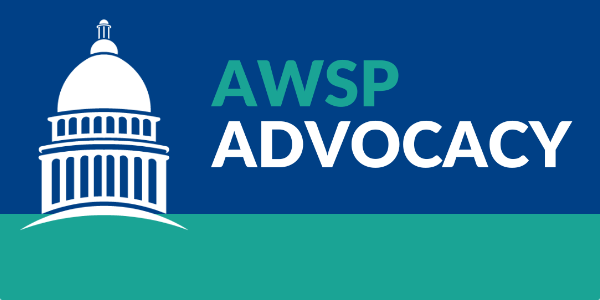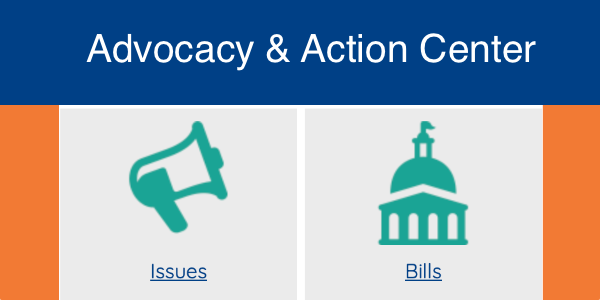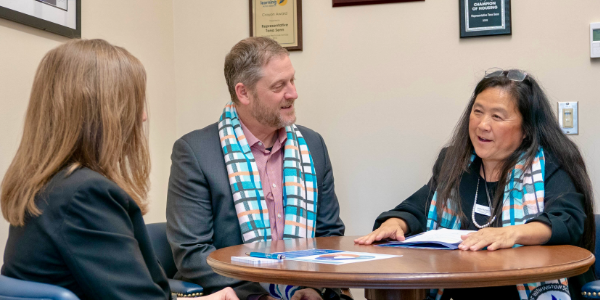
The SEB Board held an all-day meeting (its 15th) covering a wide range of issues. The important sections are referenced below in terms of the TAB number in which the content was presented. They posted the agenda and presentation materials on their website.
Under the enabling legislation and now in RCW 41.05.011(22), school districts, ESD’s and charter schools are now referred to as a “school employees benefit board organization.” Numerous references are made using that term.
A reminder that rule making is scheduled to be completed by October 1, which coincides with when on-line enrollment is scheduled to begin for the January 1, 2020 start of this model.
TAB 5 is a detailed presentation on the newly established ‘not to exceed’ funding rate for medical, dental, and vision insurance. The actual insurance premium rates have not yet been formally set, so their figures are the maximum projected costs. The Governor’s projected rate of $1,174 has now been reduced to $1,114. So, the projected cost to the state’s general fund went from $860 million in the Governor’s budget to $750 million. So, the good news is that projected general fund costs have decreased by $140+ million; the bad news is that legislators need to find $750 million in the budget to fund SEBB. (Not to mention, the approximate $250+ million projected costs to districts to cover the unfunded staff.)
As pointed out by HCA staff, if the SEBB funding rate is set lower than the $1,114, that doesn’t mean SEBB is underfunded. The Legislature can change some assumptions such as granting a longer time to repay the loans made to the HCA to fund the SEBB implementation, or spread out the length of time to build reserves. It is quite possible that the Legislature in order to lower the general fund costs may well try some ‘creative’ accounting maneuvers like these. Time will tell.
The new figure shows a doubling of the administrative cost from $16 to $32 because the HCA will need an additional loan to carry their costs to administer and pay claims until they have developed a cash reserve. The employer medical contribution (EMC) and the K–12 remittance did decrease. (From $616 to $578 medical; and $77 to $67 for remittance.)
January, 2020 thru June will show actuals and the HCA will look at the funding rate for 2021 to see if the premiums need to change based on real usage and claims history.
A chart on page 4 under Tab 5 shows employer/employee projected costs for Uniform Medical Plan (UMP). A reminder that the SEBB UMP Achieve 2 plan is the base upon which the EMC is set. One could choose a plan that is richer in benefit coverages or less rich. One’s choice will determine the out of pocket cost. The employer EMC amount does not change.
TAB 6 has a number of policy resolutions. As background, RCW 41.05.740(6)(e) states that the school employees’ benefits board shall establish terms and conditions for a school employees’ benefits board organization to have the ability to locally negotiate eligibility criteria for a school employee who is anticipated to work less than six hundred thirty hours in a school year.
Three resolutions of import are:
(A) Resolved that, a SEBB organization engaging in local negotiations regarding eligibility for school employees under RCW 41.05.740(6)(e) must offer all of, and only, the following SEBB benefits to school employees and their dependents:
- Medical (includes the wellness incentive program);
- Dental;
- Vision;
- Basic Life; and
- Basic AD&D.
(B) Resolved that, a SEBB organization engaging in local negotiations regarding eligibility for school employees under RCW 41.05.740(6)(e) shall negotiate within the range of anticipated to work hours described below:
- No less than 180 hours per school year; and
- no more than the threshold to meet the SEB Board’s eligibility established pursuant to RCW 41.05.740(6)(d).
(C) Resolved that, a SEBB Organization must contribute:
- The employer medical contribution (EMC) used for a RCW 41.05.740(6)(d) school employee multiplied by the applicable tier;
- 100% of the monthly premium, for all tiers, for the dental and vision plans as selected by the school employee;
- 100% of the monthly premium for the basic life and basic AD&D benefits;
- 100% of the monthly administration fee as charged by HCA; and
- 100% of the monthly K–12 remittance fee.
Three members of the SEB Board voted against these resolutions. One member wanted a delay to get feedback from school officials on the effect of these resolutions, (particularly ‘B’ above.) WASA testified in opposition. All three resolutions passed showing the strong labor support on the Board.
The net effect of this is that employee groups could bargain with districts and claim close to the same benefits as those employees who work 630 hours or more. As one board member indicated, an employee earning $36,000/year ($20/hour times 180 hours) could then have thousands of dollars’ worth of benefits. Other members including staff did point out that districts negotiate this benefit and could deny it. But, yeah, how successful was the last round of negotiations with union groups who threatened strikes, school delays, etc.? The bottom line is that districts should be prepared for negotiating with all employees.
As an FYI, the HCA/ERB staff meet monthly with representatives from the super coalition (labor groups) and WASBO officials to discuss these resolutions and get their reactions/suggestions. Staff did not indicate any suggestions/reactions from these groups during the presentation.
TAB 7 was a presentation on COBRA coverage, eligibility and length. Of particular import to districts is that after 1/1/2020, all future COBRA issues will be administered by HCA. Districts or third-party entities will no longer have to administer the program.
TAB 11 presented the range of communications that the HCA has developed, is developing, and even disseminating regarding the SEBB program. Check out these materials:
The HCA has also begun direct mailing to all K–12 employees.
TAB 13 has charts showing a high-level view of the benefits of the various medical, prescription, dental, life insurance, long-term disability. These are an overview of each of the plan designs and coverage limits.
Let me know if you have any questions.
Fred Yancey
The Nexus Group








